Yorkshire Pudding Recipe Without Beef Dripping
As an Amazon Associate I earn from qualifying purchases. See my disclosure policy.
Traditional Yorkshire Pudding Consistently ranked as one of the most beloved icons of British culture, Yorkshire pudding captures all the warmth and charm of old-fashioned English cooking. This traditional Yorkshire pudding recipe includes all the tips & tricks you need to create the BEST, the crispiest, most flavorful Yorkshire puddings EVER!
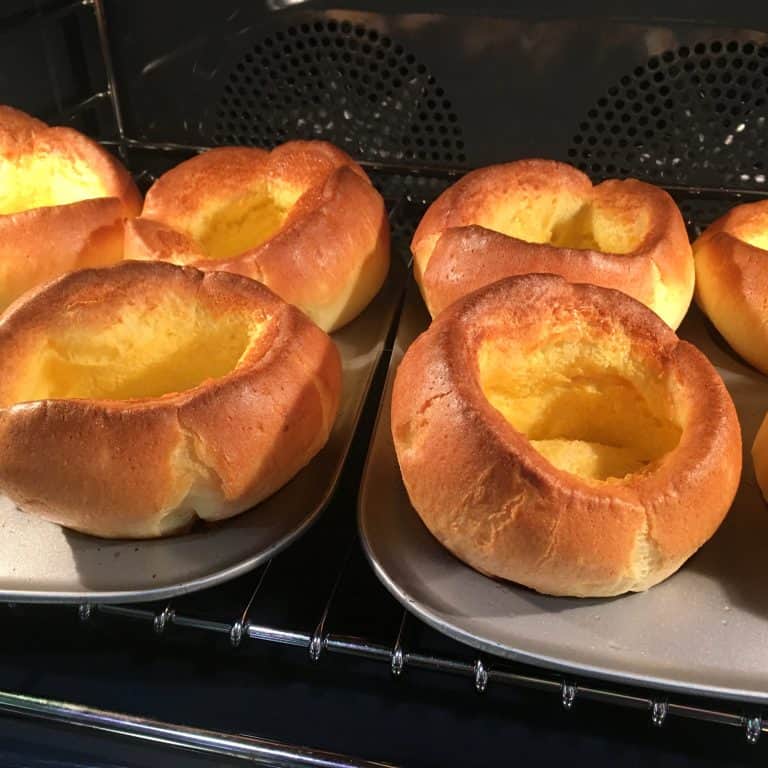
Traditional Yorkshire Pudding
The very first home-cooked meal I had after moving to England was a traditional Sunday roast with Yorkshire pudding. We were still in the process of moving into our home and were invited over to dinner by a British family from church who would soon become dear friends. A dinner of sliced roast beef, crispy roasted potatoes (no one in the world makes them as good as the Brits), green peas, carrots, brown gravy and Yorkshire pudding greeted us – our first introduction to English home cooking. And it was the perfect welcome.
What is known as "Sunday dinner", aka "Sunday roast", in the UK (roast beef, roasted potatoes, veggies and Yorkshire pudding) is believed to have originated during medieval times and has remained a strong-held tradition for centuries. The British concept of the Sunday roast dinner would go on to greatly influence the food culture of the English-speaking world at large.
Sunday Dinner is regarded as one England's national dishes and in a poll a couple of years ago it ranked #2 out of the 50 things people most love about Britain.

You're probably as curious as I was about the other top-ranking items, so here are a few: First place was the bacon butty; third, a cup of tea; fourth, their proud national history; fifth, BBC; sixth, Big Ben; 7th, Buckingham Palace. To beat out Big Ben and Buckingham Palace sure says something about the Brits' love of their culinary heritage. (Now I will say I only ever had a bacon butty once or twice during the 6 years I lived there. Yorkshire puddings on the other hand…I couldn't get enough.) Fish & Chips came in 9th and the Yorkshire Pudding, this time in its own right, came in 10th. Again, that's out of the 50 most-loved things about Great Britain. Even the Queen herself was beat out by food, coming in #15.
So all this is to say that if you love Great Britain and you love good food, there's no way around it – you HAVE to make Yorkshire Puddings to accompany your next Sunday Dinner!
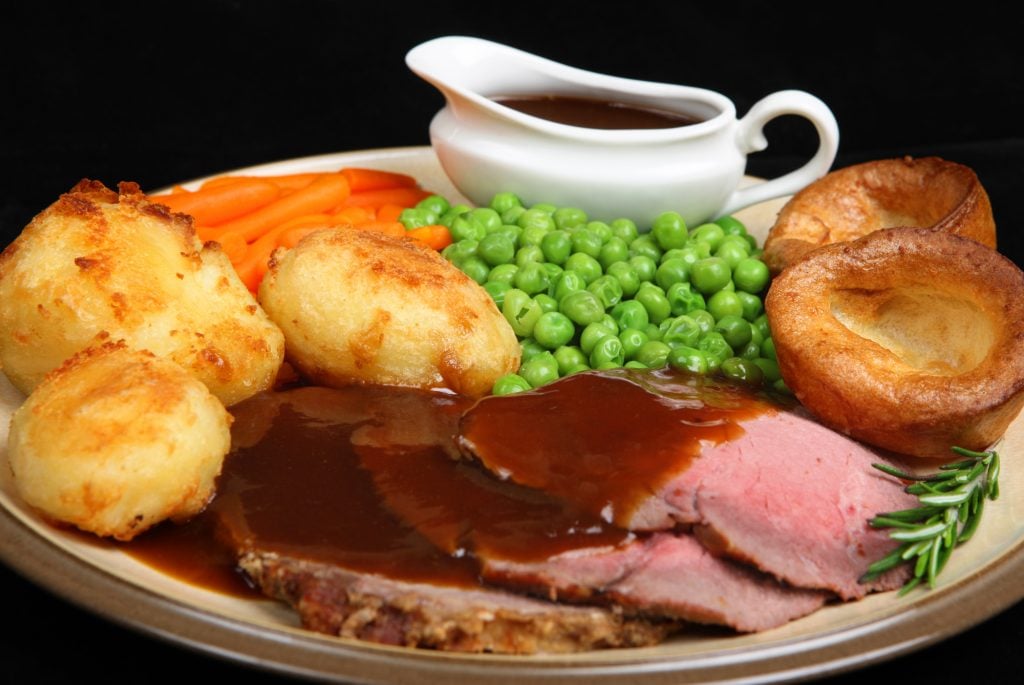
What Is Yorkshire Pudding?
Yorkshire pudding is made from a batter of eggs, flour, milk and salt and is similar to a popover in its texture and flavor. It is served as a side dish and is quite versatile in how it can be served.
Its origin is ambiguous but we do have some solid clues. We do know the first printed reference was published in 1737 in a book called "The Whole Duty of a Woman" (*wince*) in the form of a recipe called "dripping pudding," something that had already at that point been a well-known dish for several centuries.
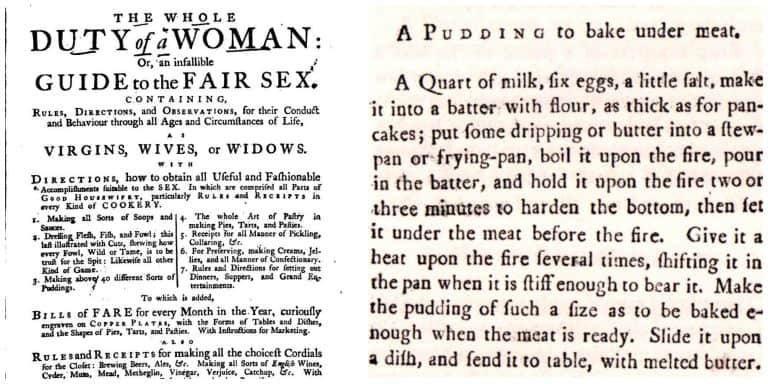
The clever cooks of northern England had developed a way to make use of the fat that would drip down onto the dripping pan from the joint of meat roasting on the spit above it in the fiery hearth. They found that they could place a pan of batter underneath to cook simultaneously with the roast and those fat drippings contributed both a marvelous flavor and texture to the dripping pudding.
Ten years later it was published in Hannah Glasse's highly acclaimed 1747 cookbook "The Art of Cookery," a bestseller for a century after its first publication. This time it was named "Yorkshire pudding" and the name has stuck ever since.

One Large Pudding Vs. Small Individual Puddings?
Traditionally Yorkshire pudding was cooked in a large, shallow baking dish and then cut into squares, but today individual puddings are most common. I prefer the individual ones because you have more surface area that is browned and crispy. While Yorkshire pudding today is served as an accompaniment to meat and vegetables, it was traditionally served as a first course with gravy. Can you guess why? The purpose was to satisfy your hunger on lower-cost ingredients so you wouldn't eat as much of the more expensive meat during the second course. Clever and economical.
Are Yorkshire Pudding and Popovers the Same Thing?
While there are other foods made from batter such as popovers, gougère and Dutch baby pancakes, Yorkshire pudding are distinctive in their wonderfully crisp texture and fabulous flavor from the meat drippings. Yes, we owe a debt of gratitude to those northern England cooks and their culinary ingenuity!

So what is a Yorkshire Pudding exactly? Martha Stewart described it as "a cross between a popover and a souffle." When you use the traditional Yorkshire puddings tins, they're flatter than popovers and have a very distinct cup shape with a hollow center that allows you to fill them with gravy and other ingredients. For serving the traditional Sunday Dinner, some like to place the roast beef, potatoes and veggies directly in the Yorkshire puddings and pour the gravy over it. However you choose to serve them, they're incredibly delicious.
Today we're going to give you all the expert tips and tricks you need to make the BEST authentic Yorkshire Puddings!
5 Tips & Tricks for Making the BEST Yorkshire Pudding!
1. Use the Right Pan
What's Your Preference: Cup-Shaped or Taller?
In addition to the pan you're using, the temperature of your batter will determine the height and shape of your Yorkshire puddings. You can either go for height or your can go for shape (specifically that classic cup shape).
Traditional Cup-Shaped Yorkshire Puddings: You'll need to use a traditional Yorkshire pudding tin and use cold batter that's been chilled in the fridge. As the cold batter hits the piping hot tins the sides will rise while the center is weighed down and rises more slowly, creating that famous and distinct cup shape for which traditional Yorkshire puddings are known. Yorkshire pudding tins are also wider with a larger surface area, so you'll more crispiness and the puddings will have a larger diameter. You can fill them up with gravy to your heart's content or add some roast beef and veggies and pour the gravy over it.
Taller Yorkshire Puddings: As more people have skipped purchasing the traditional dedicated Yorkshire pudding tin in favor of using what they already have on hand – a muffin or popover pan – taller Yorkshire puddings have surfaced all over the web. If you want to go this route, use room temperature batter. As the room temp batter is poured into the piping hot tins, the puddings will rise faster and taller. If you want them even taller you can add an extra egg white to the batter.
You can experiment with both methods and decide which one you prefer.
Below left: Using a Yorkshire pudding tin. Below right: Using a muffin tin.

Bottom line (in our opinion):
Popover and muffin tins will work but what you'll get is, well,popovers. If popovers is what you want, fine. But if you want Yorkshire Puddings, we highly recommend using the traditional Yorkshire pudding tin.
2. Let the Batter Rest
To Rest or Not To Rest?
Let it rest!
Non-rested batter will result in Yorkshire puddings that are flat, both in shape and in flavor.
Letting the batter rest, either at room temp or in the fridge (see above, "Cup-Shaped or Taller?"), will allow the liquid to penetrate the starch molecules in the flour, causing them to swell and creating a thicker consistency with a more uniform structure. This will enable a better rise for your Yorkshire puddings.
Let the batter rest of at least an hour but preferably longer and up to overnight. Resting the batter for a generous length of time is vital for the best flavor because it will create a more complex flavor (think of bread – the longer the bread dough rests the better the flavor of the bread).
Either keep the batter in the fridge the entire time until ready to use (if using cold batter, see above), or chill it in the fridge and then remove it and let it sit a couple of hours to come to room temp. Then give it a few whisks to aerate the batter.
3. Preheat the Pan
Get 'Em Hot – Piping Hot!
For the crispiest Yorkshire puddings you must preheat the tins with the fat in them until they're piping hot. They should be so hot that when you pour the batter in them you'll hear it sizzle. You'll get a better rise and, most importantly, a crispier texture.
4. Use Fat!
Traditionally called "dripping pudding" because it was baked under the roast hanging above it, dripping fat down onto the pan of batter, Yorkshire puddings aren't Yorkshire puddings without beef fat (called "beef dripping" in the UK).
Beef fat not only contributes the best flavor, it makes all the difference in the texture of the puddings.
There's a reason French fries used to be deep fried in beef tallow – it unequivocally produces the crispiest, most flavorful results. The higher in saturated fat the oil is, the crispier the results will be, and longer they'll remain crispy. Using vegetable oils or butter will result in limper Yorkshire puddings.
Do it right, use beef tallow.
To make beef tallow yourself – and MUCH cheaper – follow the same procedure outlined in this tutorial for rendering your own lard.
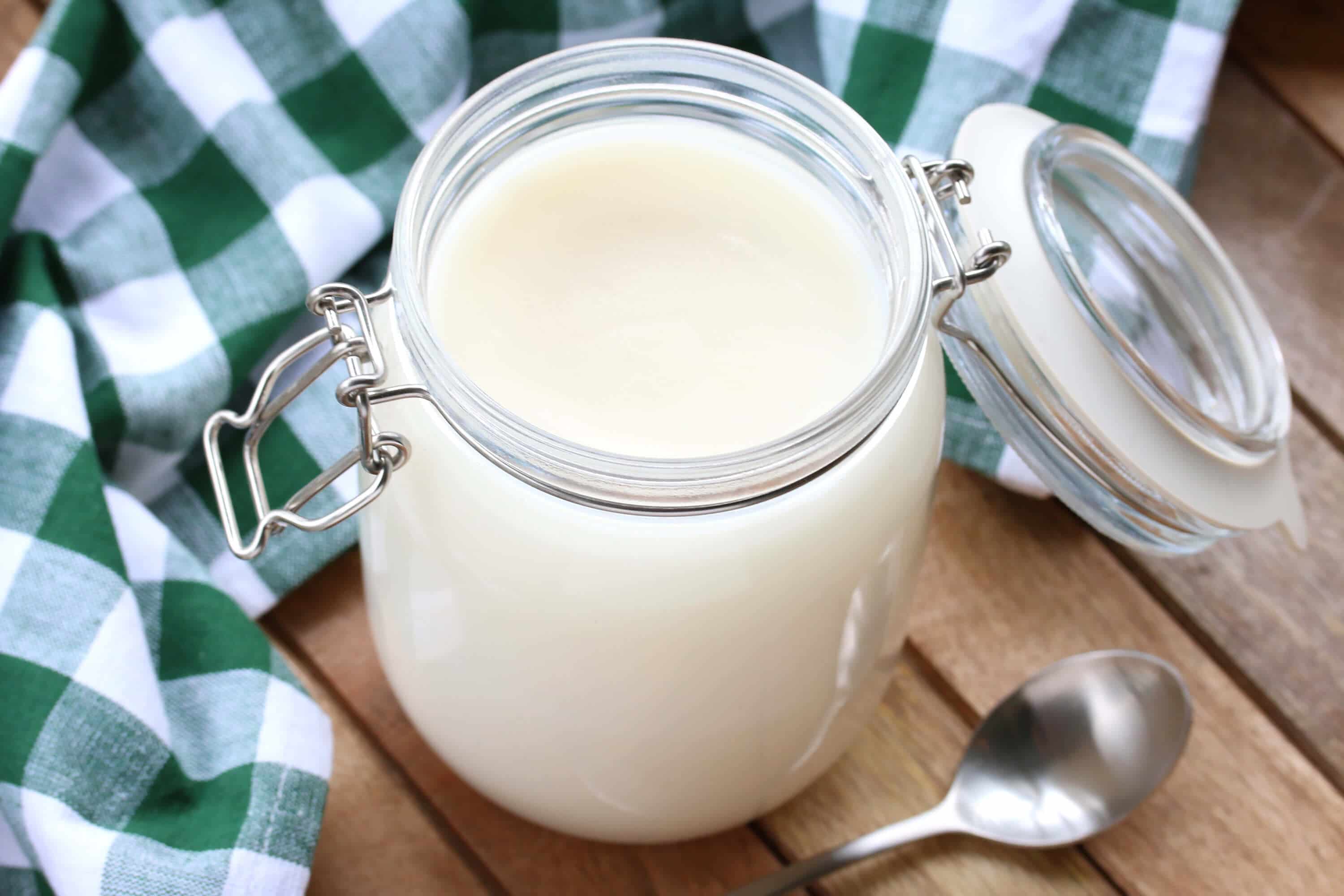
Lastly:
5. Serve Immediately
How long do Yorkshire pudding keep? They don't. Serve Them Immediately!
Yorkshire pudding must be served immediately. These puddings are very delicate and will lose their crispiness quickly. So time your dinner to have everything else ready with your guests seated at the table a few minutes before your puddings are done. Then take puddings out of the oven and immediately put them on the plates.
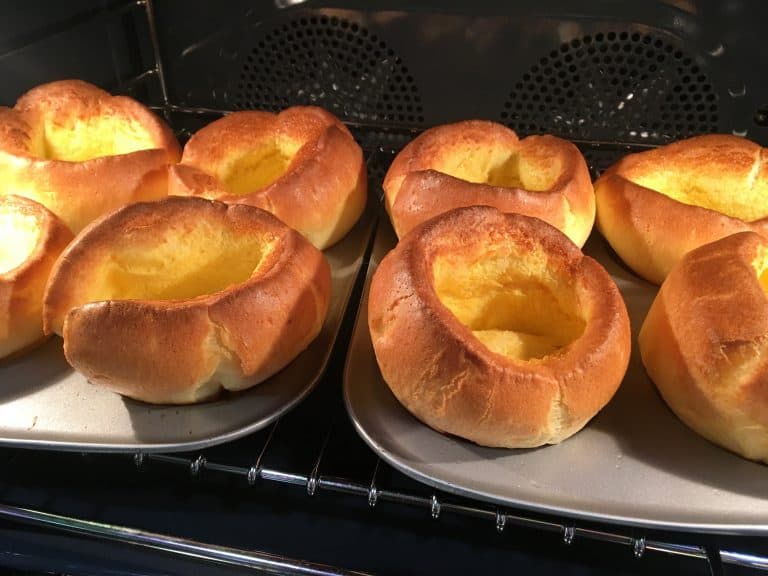
How to Make Yorkshire Pudding
Let's get started!
**READ BLOG POST ABOVE FOR DETAILED TIPS AND TRICKS FOR GETTING THE BEST RESULTS!**
In a mixing bowl, whisk or beat together the flour, salt and eggs until relatively smooth.
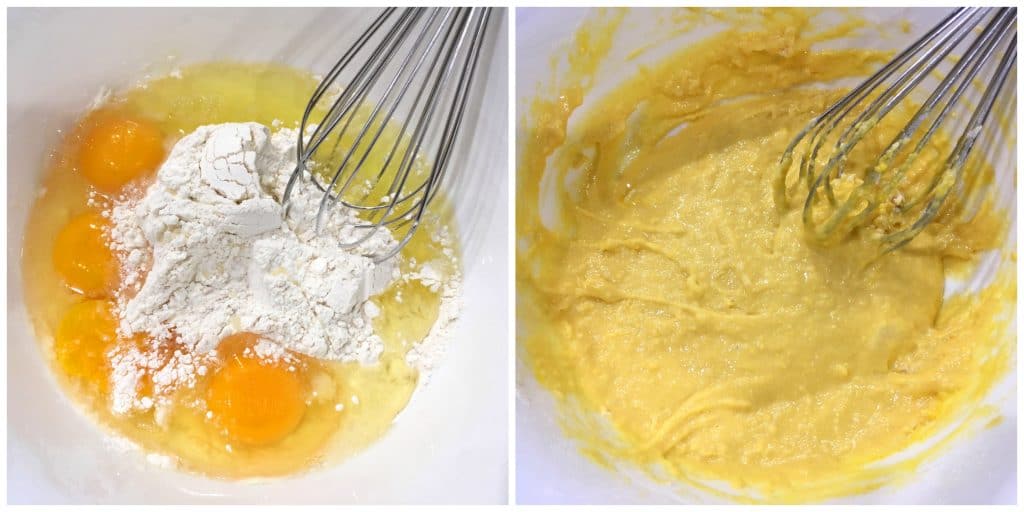
Gradually add the milk, whisking until the batter is smooth and lump-free. Cover with plastic wrap refrigerate for at least 2 hours and preferably overnight for maximum flavor. The longer the batter rests the better the flavor will be. (*See discussion in blog post about cold versus room temperature batter.)
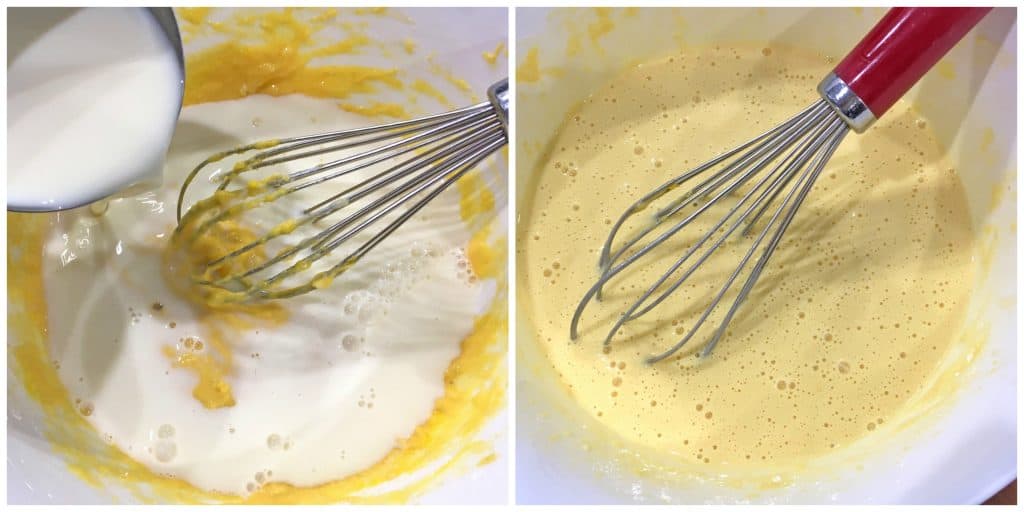
Preheat the oven to 450 degrees F.
Using a traditional Yorkshire pudding tin(*see blog post for discussion about which type of tin to use), place a teaspoon or two of beef tallow in each tin and place the tin in the oven for about 6-7 minutes until piping hot.
Pour the batter into each tin (the pan should be hot enough that the batter sizzles) between 1/2 to 3/4 full. (Note: If making two large Yorkshire puddings in two 8-inch cast iron pans, fill each pan slightly less than half full. These will need to bake slightly longer than individual puddings.)
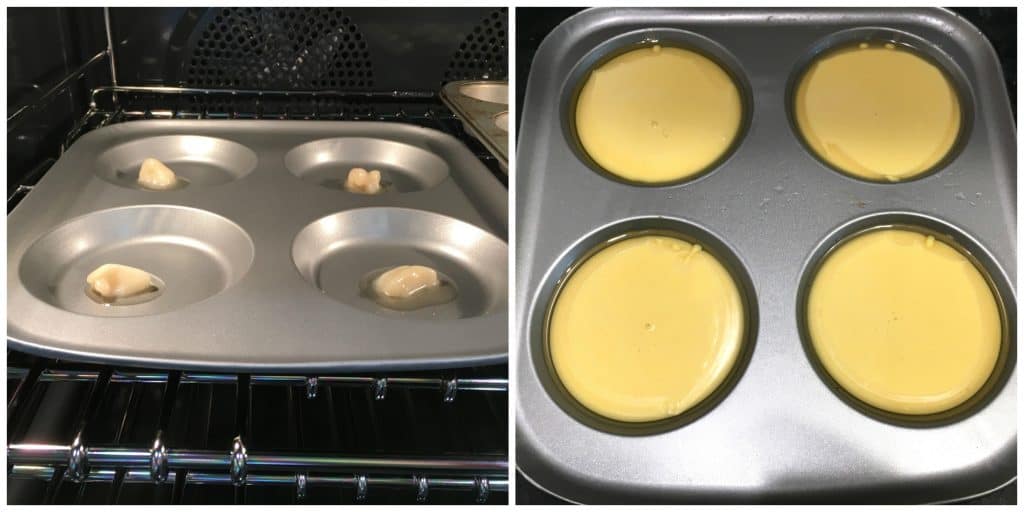
Bake the Yorkshire puddings for 11-13 minutes or until a deep golden brown.
Serve immediately.

Perfectly crispy and flavorful Yorkshire Pudding!
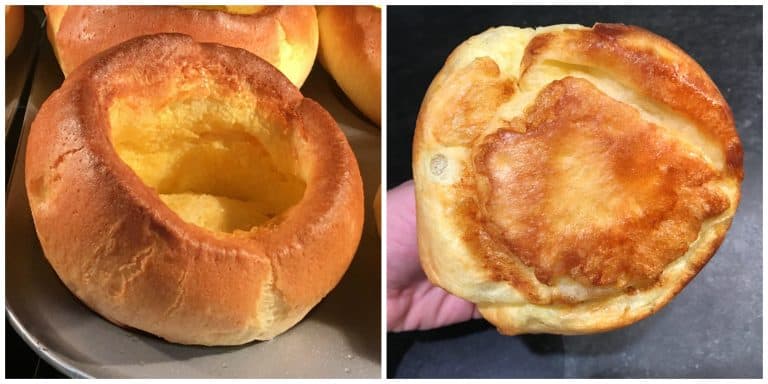
Enjoy!
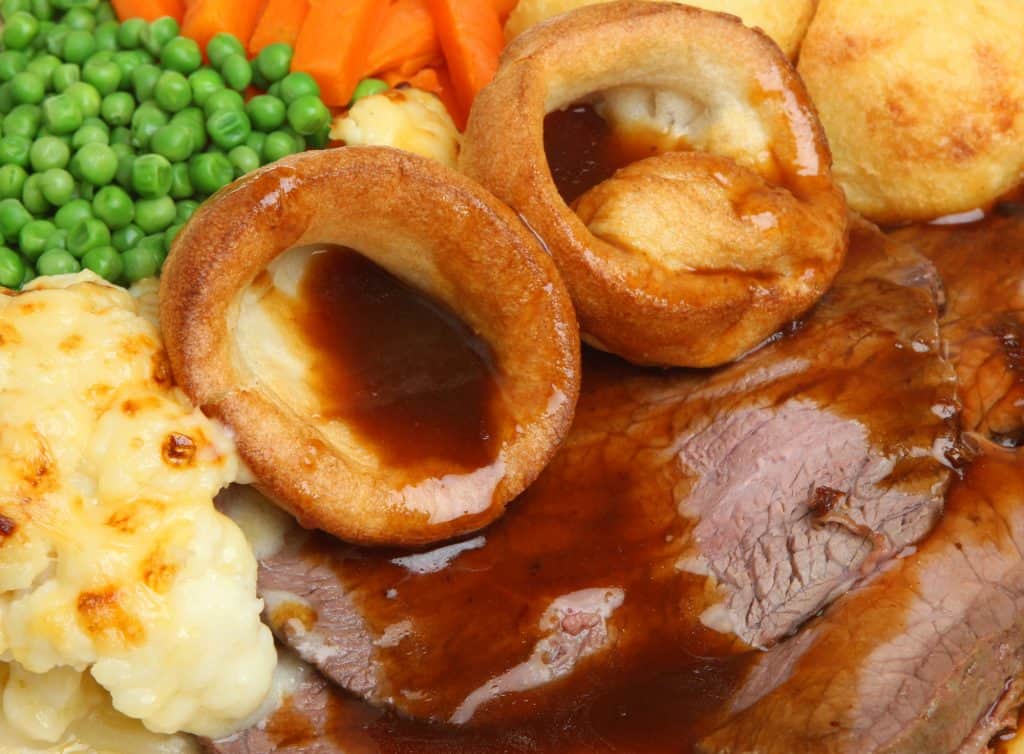
© Joseph Gough | Dreamstime
For more authentic British recipes try our:
- Fish and Chips
- Mushy Peas
- Cornish Pasties
- Bangers and Mash
- Crumpets
- Sticky Toffee Pudding
- Mincemeat Pie
- Beef and Guinness Stew
- Spotted Dick
- Yorkshire Parkin
- Toad in the Hole
- Chicken Tikka Masala
- Eccles Cakes
- Pickled Onions
- Scottish Shortbread
- Homemade Golden Syrup
- Treacle Tart
PIN ME!
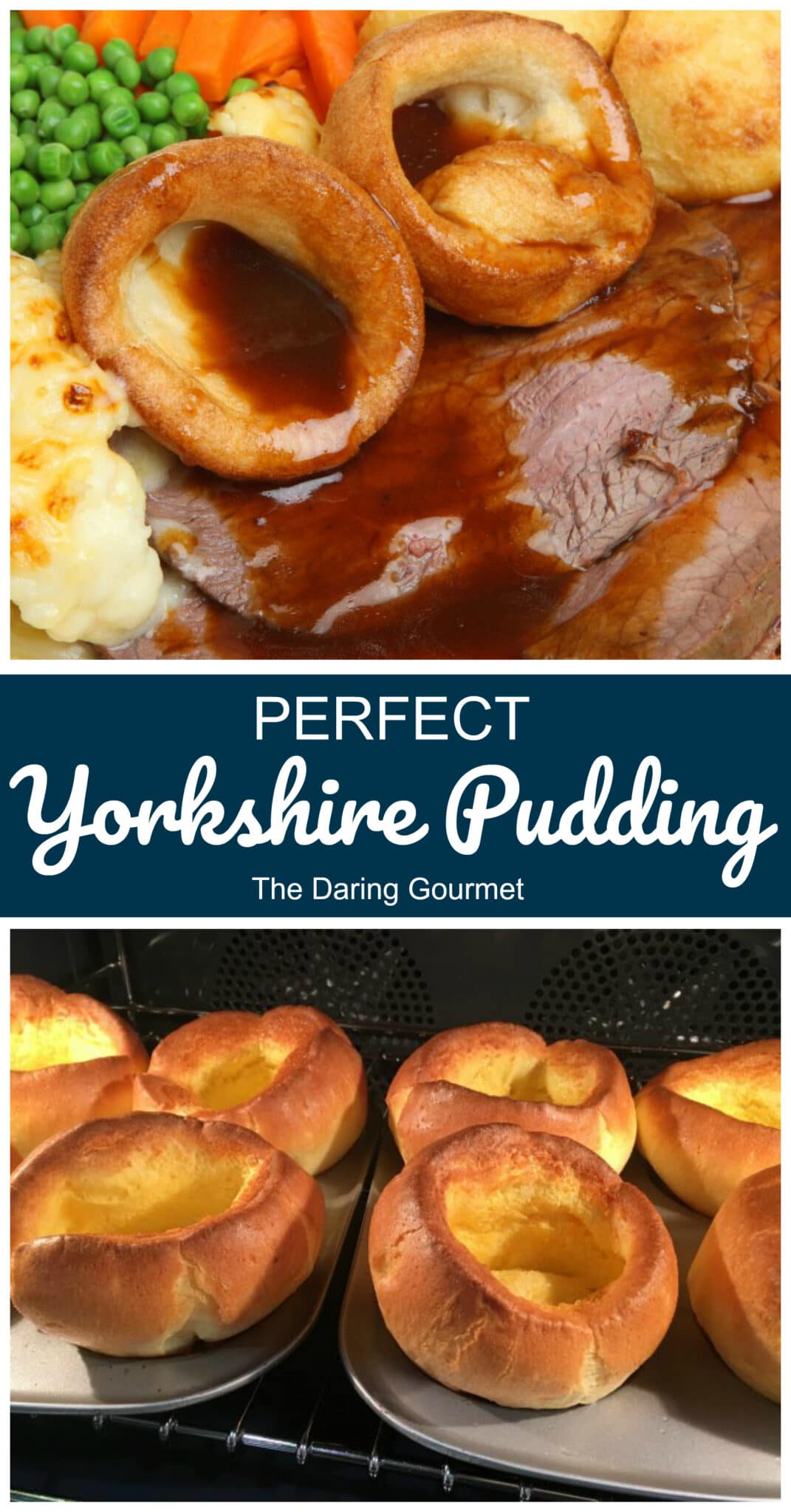
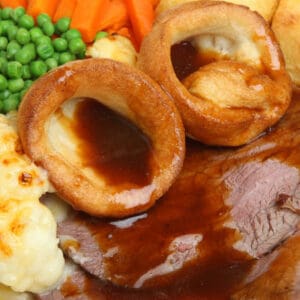
PERFECT Yorkshire Pudding
Consistently ranked as one of the most beloved icons of British culture, Yorkshire pudding captures all the warmth and charm of old-fashioned English cooking. This recipe includes all the tips & tricks you need to create the BEST, the crispiest, most flavorful Yorkshire pudding!
- 4 large eggs
- 1 cup + 2 tablespoons all-purpose flour
- 1 cup whole milk
- 1/2 teaspoon salt
- 1/4 cup beef tallow (called beef dripping in the UK), the flavorful culinary tallow, not the kind for soap-making
- Make your own beef tallow (click link for recipe) Highly Recommended
-
**SEE BLOG POST for a complete discussion on tips and tricks for creating the best results**
-
In a mixing bowl, whisk or beat together the flour, salt and eggs until relatively smooth. Gradually add the milk, whisking until the batter is smooth and lump-free. Cover with plastic wrap refrigerate for at least 2 hours and preferably overnight for maximum flavor. The longer the batter rests the better the flavor will be. (*See blog post for discussion about cold versus room temperature batter to determine which results you prefer)
-
Preheat the oven to 450 degrees F.
Using a traditional Yorkshire pudding tin (*see blog post for discussion about which type of tin to use), place a teaspoon or two of beef tallow in each tin and place the tin in the oven for about 6-7 minutes until piping hot.
Pour the batter into each tin (the pan should be hot enough that the batter sizzles) between 1/2 to 3/4 full. (Note: If making two large Yorkshire puddings in two 8-inch cast iron pans, fill each pan slightly less than half full. These will need to bake slightly longer than individual puddings.) Bake the Yorkshire puddings for 11-13 minutes or until a deep golden brown.
-
Makes enough for 12 Yorkshire pudding tins or regular muffin tin or two 8-inch cast irons if making two large Yorkshire puddings.
-
Serve immediately. Traditionally served with a roast, roasted potatoes, veggies and brown gravy.
To Freeze: Let the Yorkshire puddings cool completely then freeze them in ziplock bags or an airtight container for up to one month. Let thaw and then toast in the oven.
Serving: 1 Yorkshire pudding | Calories: 111 kcal | Carbohydrates: 9 g | Protein: 3 g | Fat: 6 g | Saturated Fat: 3 g | Cholesterol: 56 mg | Sodium: 126 mg | Potassium: 58 mg | Sugar: 1 g | Vitamin A: 110 IU | Calcium: 33 mg | Iron: 0.7 mg
Mention @daringgourmet or hashtag #daringgourmet
Source: https://www.daringgourmet.com/yorkshire-pudding/